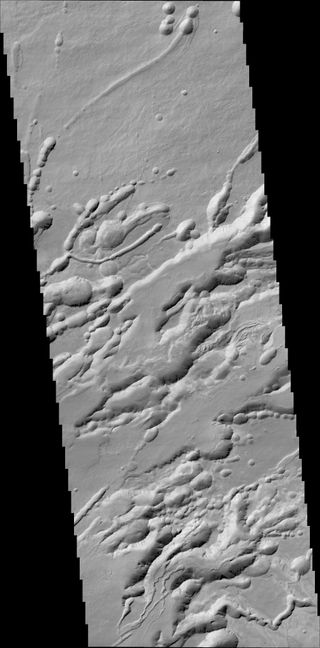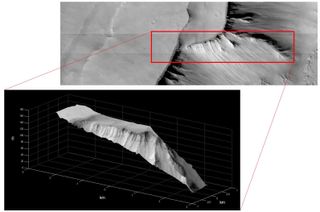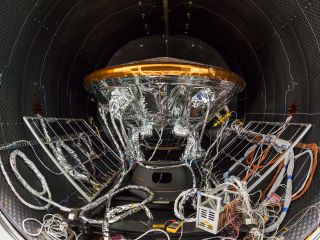Photos: Europe's ExoMars Missions to Mars in Pictures
ExoMars' Trace Gas Orbiter and Schiaparelli Lander

Artist’s illustration showing the separation of the ExoMars 2016 entry, descent and landing demonstrator module, named Schiaparelli, from the Trace Gas Orbiter, and heading for Mars.
ExoMars Launch

The first phase of the ExoMars mission flew toward the Red Planet atop a Russian-made Proton-M rocket on March 14, 2016.
ExoMars Liftoff

The first of two phases of the European/Russian ExoMars mission successfully launched into space aboard a Proton-M rocket on March 14, 2016.
ExoMars Proton-M Rocket Engines

A Russian-made Proton-M rocket successfully launched the European/Russian ExoMars mission into space on March 14, 2016.
ExoMars Launchpad

A Russian Proton-M rocket sits patiently on the launch pad on March 14, 2016, ready to send the first phase of the European-Russian ExoMars mission on its way to the Red Planet.
ExoMars in Flight

The first phase of the joint European/Russian ExoMars mission soared through the clouds on its way to the Red Planet, atop a Proton-M rocket on March 14, 2016.
First Images from CaSSIS

Image of a 0.9 mile (1.4 kilometer) sized crater (left center) on the rim of a larger crater near the Mars equator. It was acquired at 7.2 meters/pixel by the Colour and Stereo Surface Imaging System (CaSSIS) aboard the European Space Agency's ExoMars Trace Gas Orbiter.
Get the Space.com Newsletter
Breaking space news, the latest updates on rocket launches, skywatching events and more!
CaSSIS Scopes Out a Volcano

A structure called Arsia Chasmata on the flanks of one of the large Martian volcanoes, Arsia Mons. This view was created by the Colour and Stereo Surface Imaging System (CaSSIS) aboard the European Space Agency's ExoMars Trace Gas Orbiter. The width of the image is around 16 miles (25 kilometers). The formation is volcanic in origin, and pit craters are visible.
Stereo Imaging with CaSSIS

Image of a 0.9 mile (1.4 kilometer) sized crater (left center) on the rim of a larger crater near the Mars equator. It was acquired at 7.2 meters/pixel by the Colour and Stereo Surface Imaging System (CaSSIS) aboard the European Space Agency's ExoMars Trace Gas Orbiter.
ExoMars' Schiaparelli Lander Model Tests

A model of ExoMars' Schiaparelli lander prepares for thermal tests in Cannes, France. The European Space Agency's Mars lander will hurtle to the planet's surface Oct. 19, and its heat shields will have to withstand about 2,732 degrees Fahrenheit (1,500 degrees Celsius).
Color Photo of ExoMars Lander Crash Site

These images taken by NASA's Mars Reconnaissance Orbiter on Nov. 1, 2016, show the wreckage of Europe’s Schiaparelli lander, which crashed on the Red Planet on Oct. 19, 2016. At top is the crater caused by the lander’s impact; at bottom left is the craft’s parachute and attached back heat shield. The feature at bottom right is thought to be the front heat shield. The 10-meter scale bar applies to all three portions of the image.
Join our Space Forums to keep talking space on the latest missions, night sky and more! And if you have a news tip, correction or comment, let us know at: community@space.com.

Space.com is the premier source of space exploration, innovation and astronomy news, chronicling (and celebrating) humanity's ongoing expansion across the final frontier. Originally founded in 1999, Space.com is, and always has been, the passion of writers and editors who are space fans and also trained journalists. Our current news team consists of Editor-in-Chief Tariq Malik; Editor Hanneke Weitering, Senior Space Writer Mike Wall; Senior Writer Meghan Bartels; Senior Writer Chelsea Gohd, Senior Writer Tereza Pultarova and Staff Writer Alexander Cox, focusing on e-commerce. Senior Producer Steve Spaleta oversees our space videos, with Diana Whitcroft as our Social Media Editor.










